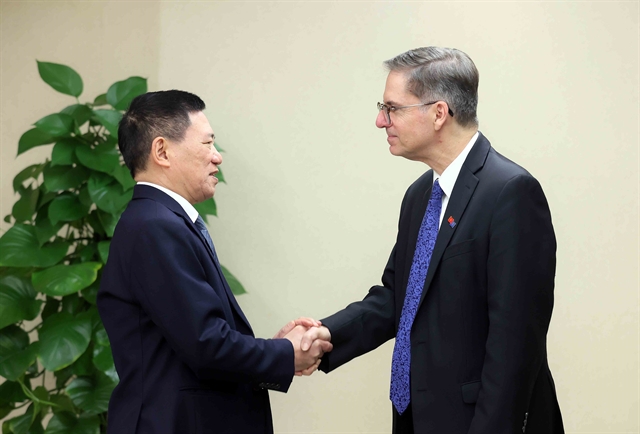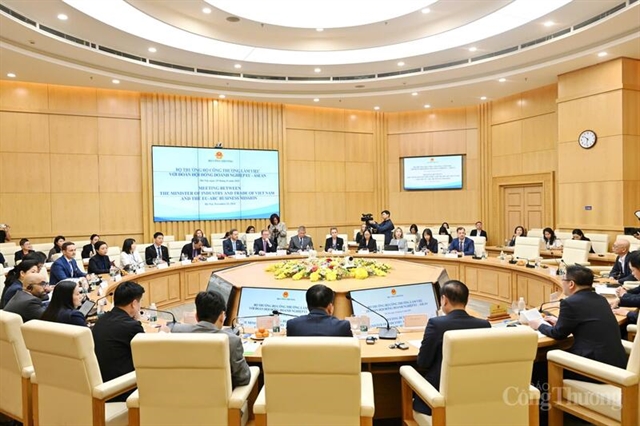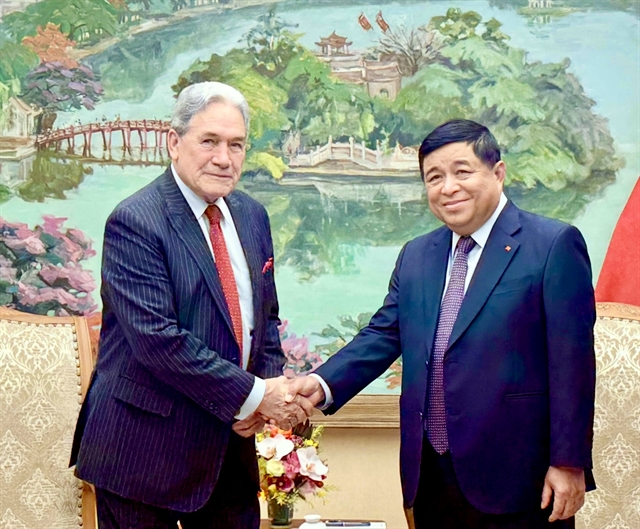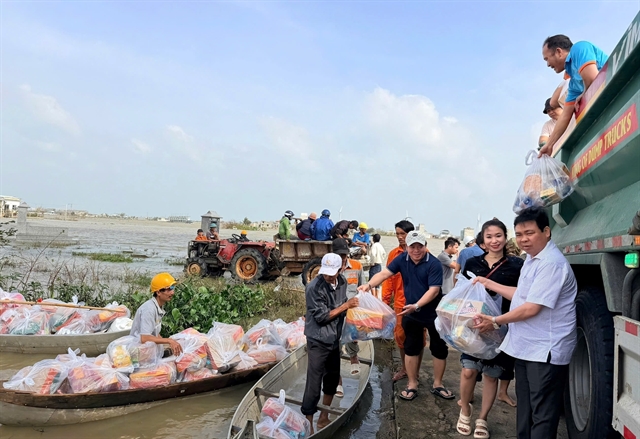.jfif) Opinion
Opinion
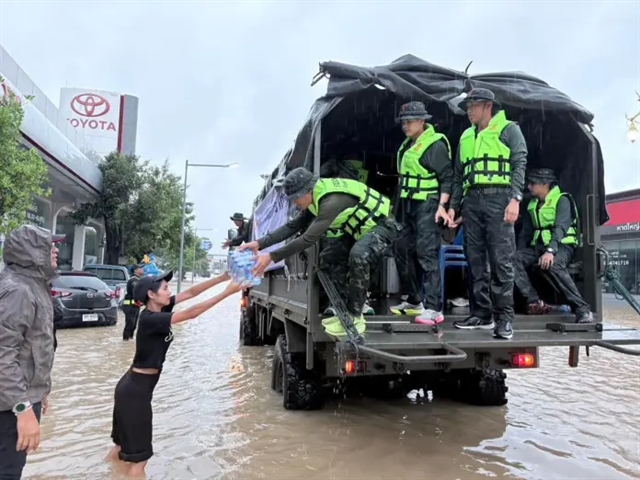
Nguyễn Chu Hồi, former deputy director general of Việt Nam Administration of Seas and Islands, discusses the recent ratification of the Agreement on the conservation and sustainable use of biodiversity in waters beyond national jurisdiction, commonly known as the High Seas Agreement, with Natural Resources and Environment online magazine.
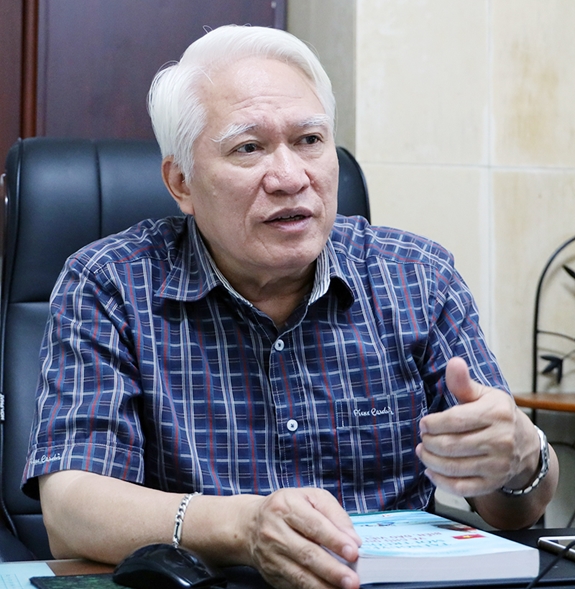
|
| Nguyễn Chu Hồi, former deputy director general of Việt Nam Administration of Seas and Islands. Photo baocantho.vn |
Nguyễn Chu Hồi, former deputy director general of Việt Nam Administration of Seas and Islands, discusses the recent ratification of the Agreement on the conservation and sustainable use of biodiversity in waters beyond national jurisdiction, commonly known as the High Seas Agreement, with the Natural Resources and Environment online magazine.
Could you please tell us about the significance of this ratification for maritime countries, especially Việt Nam?
The ratification of the Biodiversity Beyond National Jurisdiction Treaty (the Treaty of the High Seas) is a vital step in realising the principles and objectives set forth in the 1982 Law of the Sea Convention, particularly focusing on the conservation and sustainable use of biological diversity in areas beyond national jurisdiction. These areas include the high seas and ocean regions located beyond the 200 nautical miles limit.
One notable aspect of the High Seas Agreement is its recognition of "sea genetic resources" as the common heritage of mankind. This recognition ensures that the benefits derived from these marine genetic resources are shared equitably among all countries, including landlocked nations, fostering a spirit of global cooperation in conserving our shared biodiversity.
This agreement serves as a crucial framework to regulate activities related to biodiversity conservation and utilisation, including fisheries activities, spanning a wide range of ocean regions beyond the natural heritage of species, reaching beyond the 200 nautical miles limit. By addressing the destructive exploitation and unsustainable practices that have affected our precious marine resources, the High Seas Agreement sets the stage for a sustainable and responsible approach to managing our oceans for generations to come.
Indeed, Việt Nam has been proactively involved in the negotiation process at various levels and has made significant contributions to intergovernmental conferences. During these negotiations, the Vietnamese delegation has put forth proposals that prioritise the common interests of developing countries, particularly regarding capacity building, marine technology transfer, and the promotion of draft document contents aligned with international law, including the 1982 Law of the Sea Convention. These efforts have been instrumental in safeguarding Việt Nam’s legitimate rights and interests in marine matters.
To achieve the ratification of the treaty, numerous Vietnamese state agencies, organisations, and experts have been deeply engaged in research and negotiation. Their tireless efforts have not only been driven by a sense of duty and responsibility but also fueled by their love for the ocean and a strong sense of responsibility for safeguarding the nation's seas and islands.
The preparation process for the Intergovernmental Conference, advocacy activities in the UN General Assembly, and the extensive negotiations have been a challenging journey lasting nearly two decades. Since 2018, with the active involvement of the entire political system of Việt Nam, these efforts have been significantly intensified.
Throughout this protracted negotiation process, especially in recent times, Việt Nam’s State management agencies responsible for diplomacy, as well as scientific research organisations like the Việt Nam Academy of Science and Technology, NGOs, and independent experts, have been actively engaged in thematic studies and assessments. They have provided crucial scientific foundations and proposed innovative ideas through the inter-sectoral working group led by the Ministry of Foreign Affairs during the United Nations missions led by the Ministry of Foreign Affairs. The invaluable contributions from these stakeholders deserves recognition and appreciation as they have substantially contributed to the success of Việt Nam’s negotiation, deliberation, and advocacy process.
Personally, I have not participated in national research groups. However, since 2004, I have been directly involved in international preparations for this issue through my role in the Working Group on Ocean Governance Policy. Additionally, since 2005, I have been a member of the Steering Committee of the Global Ocean Forum (GOF).
From 2015 to 2018, I participated in the UN's Project No 4, focusing on "Capacity building and marine technology transfer for biodiversity conservation and sustainable fisheries development in ABNJ (Marine Areas Beyond National Jurisdiction)". This project was led by GOF in collaboration with UNESCO's Intergovernmental Oceanographic Commission (IOC-UNESCO) and the Global Environment Facility (GEF).
The updated results from these activities were shared with the UN joint focal point and transferred to member states for discussions and inclusion in draft documents of the Treaty on the High Seas through workshops, intergovernmental conferences, and other platforms. As one of the named authors in the final report of Project 4, my contributions have been recognised on an international level, rather than at the national level.
The agreement has undergone 20 years of placement and discussion before reaching a consensus. Undoubtedly, the negotiation process has been extensive and intricate. Could you elaborate on some of the difficulties that Việt Nam and other countries faced in reaching this agreement?
The World Ocean is demarcated into two large segments with distinct legal regimes, separated by a common boundary of 200 nautical miles from the baselines of coastal states and island nations, as stipulated in the 1982 Law of the Sea Convention. These segments are the seas under national jurisdiction (within 200 nautical miles) and the marine areas beyond national jurisdiction (ABNJ) (2012). The negotiation, delimitation, conservation, exploitation, and utilisation of these maritime areas have proven to be sensitive, complex, and highly challenging issues for all parties involved.
Particularly, the marine areas beyond national jurisdiction is considered a common heritage of mankind, meaning that all countries, whether they possess coastlines or not, have the right to benefit from these resources. However, in reality, there is a significant disparity in the understanding and level of marine science and technology among nations. Consequently, only developed countries with advanced capabilities in marine science and technology have been able to fully exploit and enjoy the benefits of this valuable resource.
This has led to the emergence of intertwined interest groups with differing perspectives on the conservation and equitable use of marine biodiversity in ABNJ regions, reflecting the interests of developed and developing countries, as well as countries with and without sea access. As a result, a prolonged process of negotiation, deliberation, and advocacy is essential to bridge the aforementioned "gap".
Even during the preparation of the 1982 Convention on the Law of the Sea and its establishment, the issue of marine biodiversity was not given the highest priority, and the concept itself was not widely recognised or compelling enough for all stakeholders involved.
With the significant implications of this agreement, could it be a remarkable opportunity for Việt Nam to achieve breakthroughs, promote sustainable development of the marine economy, and safeguard sovereignty at sea?
Certainly, the establishment of this treaty of the High Seas presents tremendous opportunities for our country. Firstly, the treaty serves as a legally binding instrument that enables nations, regardless of their current disparities, to equitably enjoy the valuable genetic resources found in the ocean.
Secondly, this agreement opens doors for Việt Nam to deepen its integration with the international community, enabling us to engage more extensively with the vast opportunities outlined in the 1982 Law of the Sea Convention and this supplementary treaty.
Thirdly, this treaty will stimulate scientific research and technology transfer in the oceanic domain, an area where our nation has yet to fully harness its potential, despite increasing practical demands.
Fourthly, through the treaty, we have the chance to enhance the quality of our marine human resources. Together with advancements in marine science and technology, this could drive remarkable strides in the sustainable development of Việt Nam’s marine economy, aligning with the principles laid out in Resolution No 36-NQ/TW on the sustainable development of Việt Nam’s marine economy up to 2030, with a vision to 2045.
Fifth, Việt Nam can seize opportunities to develop various economic, regional, and oceanic sectors that align with the international context.
If the 1982 Convention on the Law of the Sea is adhered to, there exists a marine area beyond national jurisdiction in the East Sea (internationally known as the South China Sea), which should be recognised by countries in the region. However, China's unreasonable and unilateral "Nine-Dash Line" claim has led to a refusal to acknowledge this sea area. This absurdity has escalated tensions over maritime sovereignty in the East Sea to a complex and unpredictable level.
The High Seas Treaty will provide countries in the region, including Việt Nam, with legal grounds to strengthen awareness and collaboratively address and eliminate unreasonable claims, restoring order and maintaining a peaceful environment in accordance with the true values of international law, including the 1982 Convention on the Law of the Sea. Undoubtedly, the High Seas Treaty will bolster efforts to protect our country's sovereignty, other maritime rights, and interests in the East Sea.
Illegal, undeclared, and unregulated (IUU) fishing needs to be prevented, pushed back, and gradually eliminated, towards responsible and sustainable fisheries development. It is necessary to focus on training staff in marine governance and marine science and technology with sufficient knowledge, experience, and skills to solve and advise on issues specified in the Treaty on the High Seas. In addition, it is necessary to boldly apply "strong" measures to switch from small, traditional fisheries to commercial fisheries towards industrialisation, modernisation, and high international integration ability. VNS

